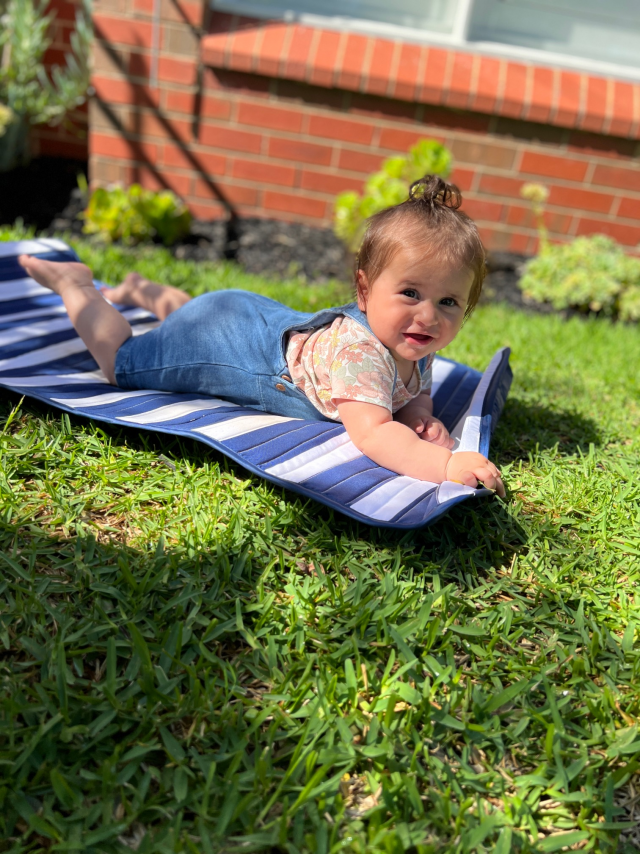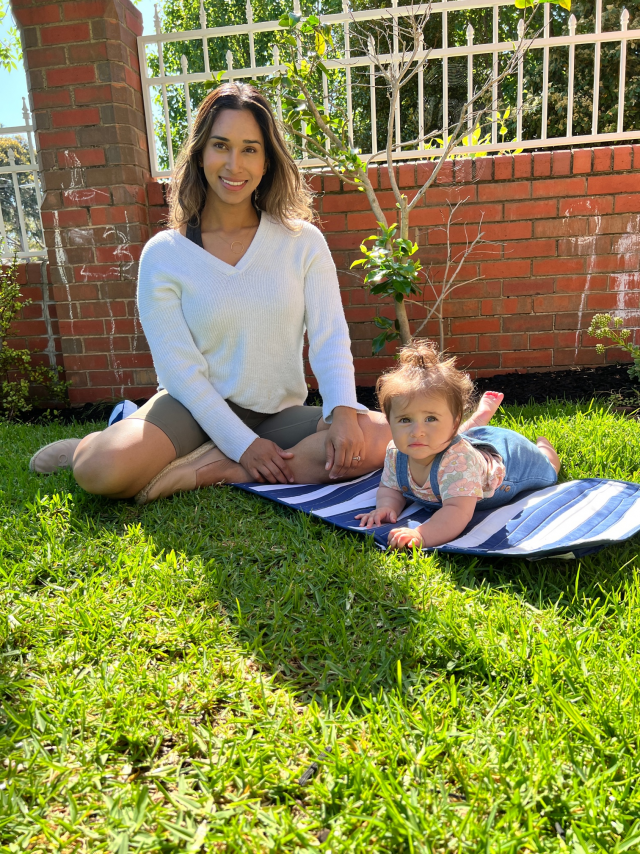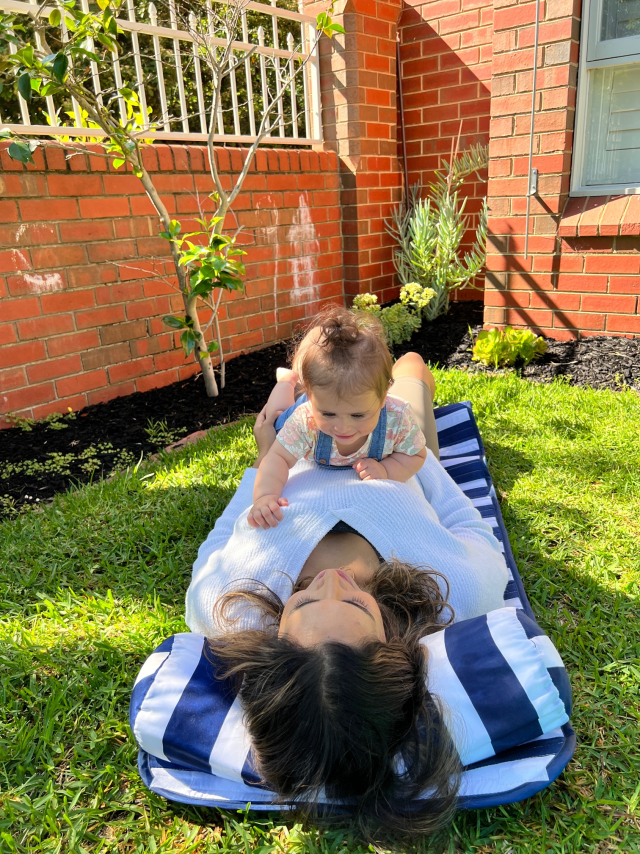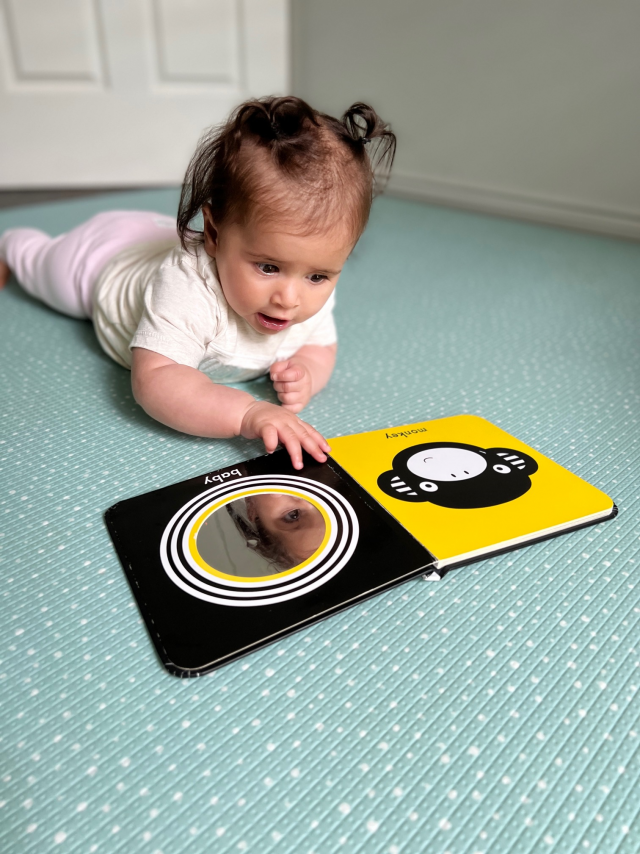By Casey Neill
Tummy time is the best way to help your baby get moving.
Glen Iris physiotherapist and mum of two, Nadeshka Withanage, says tummy time can be performed safely from birth.
“Your baby lays on their tummy and they’re supporting their own body weight through their own forearms,” she said.
“It gives baby the opportunity to use and strengthen their neck, back and shoulder muscles for moving, rolling, then crawling.
“Tummy time is one of the first things you can do with your baby to set them up for an active and healthy start to life.”
Ms Withanage said it was also shown to prevent flat spots from long periods spent sleeping on the back, and extended periods in prams and cars “which tends to happen now that we’re all on the move so often”.
“Some parents can get discouraged by a lack of head and neck control in early weeks,” she said.
“But even when a baby is held against a parent’s body, lap or forearm in the early days it can count towards time spent on their tummy.”
During the first few months she used a rolled-up towel under her baby’s chest with their forearms in front of the towel.
“That can help minimise the effect of gravity and make it easier for your baby to maintain that activity,” she said.
Incorporate tummy time when baby is alert and hasn’t recently been fed, to avoid reflux and vomiting.
“You can start with 30 seconds and build up,” Ms Withanage said.
“Try several times a day, and aim for 30 minutes across the entire day until baby is well and truly crawling.
“Don’t get discouraged early on.
“Change the way you do tummy time regularly, change it up.
“You’ll find there might be particular ways that your child is really engaging in tummy time.
“If you still have concerns or you’re really struggling to find an appropriate time, speak to health nurse or GP.”
She recommended a back massage after a shower as one way to incorporate tummy time with a reluctant bub.
Parents can also lay flat on their back with bubs on their chest or tummy.
“This can let them feel safe and not so alone during it,” she said.
“I think that’s often why babies often don’t like tummy time – it’s hard work, and it often feels like a very independent activity.”
Get down on your own tummy and have a conversation with your baby.
“Face to face interactions are valuable and fun,” Ms Withanage said.
“You can chat to them about anything, from dinner options, to weekend plans, to nursery rhymes.
“Use colourful toys or even shake a rattle on floor level.
“Read books together, or even use glossy magazines in the early months.
“You can use a yoga mat in front of a mirror.
“As they get older, you can get more creative. Fill a shallow pan with water and add plastic toys.”
Try pushing a car past or rolling a ball past your baby, encouraging them to turn their head.
“You can get siblings involved and other family members,” she said.
“My favourite thing is to go outside for tummy time.
“For a baby to see leaves blowing on the trees, the garden plants moving, the breeze on their face can be very beneficial.
“Bring a picnic rug to a park. Set baby up on their tummy, even when you’re out socialising.”
Ms Withanage said the The World Health Organisation suggested not restraining your baby for more than an hour at a time, in a pram or stroller, or even strapped onto your body or in a high chair.
“They don’t recommend screen time as a way to get your baby to focus or do tummy time that way,” she said.
“Additional devices such as walkers and exercise jumpers that claim to help your baby with walking or reaching developmental milestones are not encouraged and in-fact can delay the natural progression of development.
“They have also been shown to cause injury due to overuse and tightening of muscle groups, and increase the risk of accidents around the house as babies are moving around too quickly.
“Floor-based play including lots of tummy time is the safest and best way to reach overall total development.”










